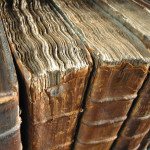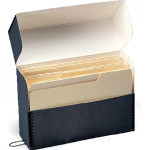What are special collections libraries?
Special collections libraries can be part of universities, colleges, public libraries, or non-profit organizations like The College of Physicians of Philadelphia. These libraries have materials that are rare and often unique (existing only in one place), usually have extra security, and require researchers to make appointments to use their collections. Usually, a special collections library will focus on one or very few subjects – at the Historical Medical Library, our collection focuses on the history of medicine.

Generally, books and other materials found in special collections libraries can’t be checked out – they have to be used in the library’s reading room. This is because they are rare or unique and sometimes very fragile.
Materials in special collections libraries may include rare books, medieval manuscripts, photographs, lantern (glass) slides, film reels, video cassettes, audio cassettes, diaries, recipe books, lecture notes, correspondence, newspapers, and other papers.
Many special collections libraries, like the Historical Medical Library, have “closed stacks,” meaning only library staff can browse the shelves and pull material for use. This is because the materials are rare or unique, sometimes very fragile, and require a cool, dark space in order to stay preserved.
At the Historical Medical Library, like other special collections libraries, the library collection is divided into two basic parts:
 1. The general Library collection, which includes books, journals, and pamphlets
1. The general Library collection, which includes books, journals, and pamphlets
and
 2. The Archives, which includes the historical records of the College and any donated “papers” or “records”
2. The Archives, which includes the historical records of the College and any donated “papers” or “records”
“Papers” is a general term that refers to a collection of personal or family documents. A collection of “papers” can hold materials in a variety of formats, including manuscripts, typescripts, clippings, photographs. It is used in the title of a collection, even if that collection includes bound works such as scrapbooks or diaries, and even three-dimensional artifacts.
“Records” is a general term that refers to a collection of documents created by an organization (like The College of Physicians of Philadelphia, a school, government offices, etc). Usually, “records” are considered the result of routine activities or a transactions, especially those of an organization. Like “papers,” “records” can contain materials in a variety of formats.
What are the rules in special collections libraries?
Most special collections libraries have rules for researchers who are using the library’s collection. These rules are meant to make a researcher’s visit go more smoothly and help protect the materials. Some of the Historical Medical Library’s rules are:
– Researchers must make appointments to visit the Library and must request materials from the Library catalog ahead of their visit.
– Researchers must use pencils and paper, or take notes on a laptop or tablet – no pens allowed, because they can damage the materials permanently.
– No food or drink is allowed in the Library.
– Only non-flash photography is allowed.
– Materials may only be used in the Library reading room.
– Researchers may have only one (1) box from an archival collection on the table at a time, and only one (1) folder out of that box at a time.
To read all of the Historical Medical Library’s policies, please click here.
New to archival research? Here is some useful vocabulary to remember when searching our finding aids catalog:
A “record group” can be considered a group of collections that share the same “provenance” (origin or source). At the College, we use record groups to separate the collections of administrative departments (such as Library, Museum, Executive Office).
“Collections” are 1) a group of materials with some unifying characteristic; or 2) materials assembled by a person, organization, or repository from a variety of sources.
Collections are organized into “series”, and sometimes “sub-series”. Series and sub-series are often ordered by subject (e.g. “Administration” or “Medical institutions”); form (e.g. “Correspondence” or “Photographs”); or date. Organizing collections into series and sub-series makes the materials easier to search through and find relevant items.
Series and sub-series contain folders and the folders contain items. Some very detailed finding aids will list all the items in a collection (archivists refer to this as item-level description) instead of the folders (archivists refer to this as folder-level description).
A finding aid is a detailed catalog record of a manuscript/archival collection and will include the manuscript call number; dates; subject headings; notes; and a container list (inventory), which will list the series, sub-series, and folders, and the box numbers the materials are located in.
Some tips for searching our finding aids:
– When searching using phrases or names, be sure to put the phrase or name in double quotes (“anatomy acts” or “Silas Weir Mitchell”).
– Searches will return collection-level, series-level, and folder- or item-level results, which can be filtered on the right-hand side of the page. “Archival records” will give you results of only series, sub-series, folders, and items.
– Selecting a collection from the search results will take you to the main body of the finding aid. To best view the inventory of the collection, click on the red bar where it says “Collection Organization.” You can then scroll down and see all of the items found in the collection. This is currently the easiest way to search through a list of the items in a collection.
– To request items from the Archives, please follow the link to the Library catalog by clicking “External documents” located in the “Expand All” section of the finding aid. Once in the catalog, you will be able to log in and request specific boxes from collections.
